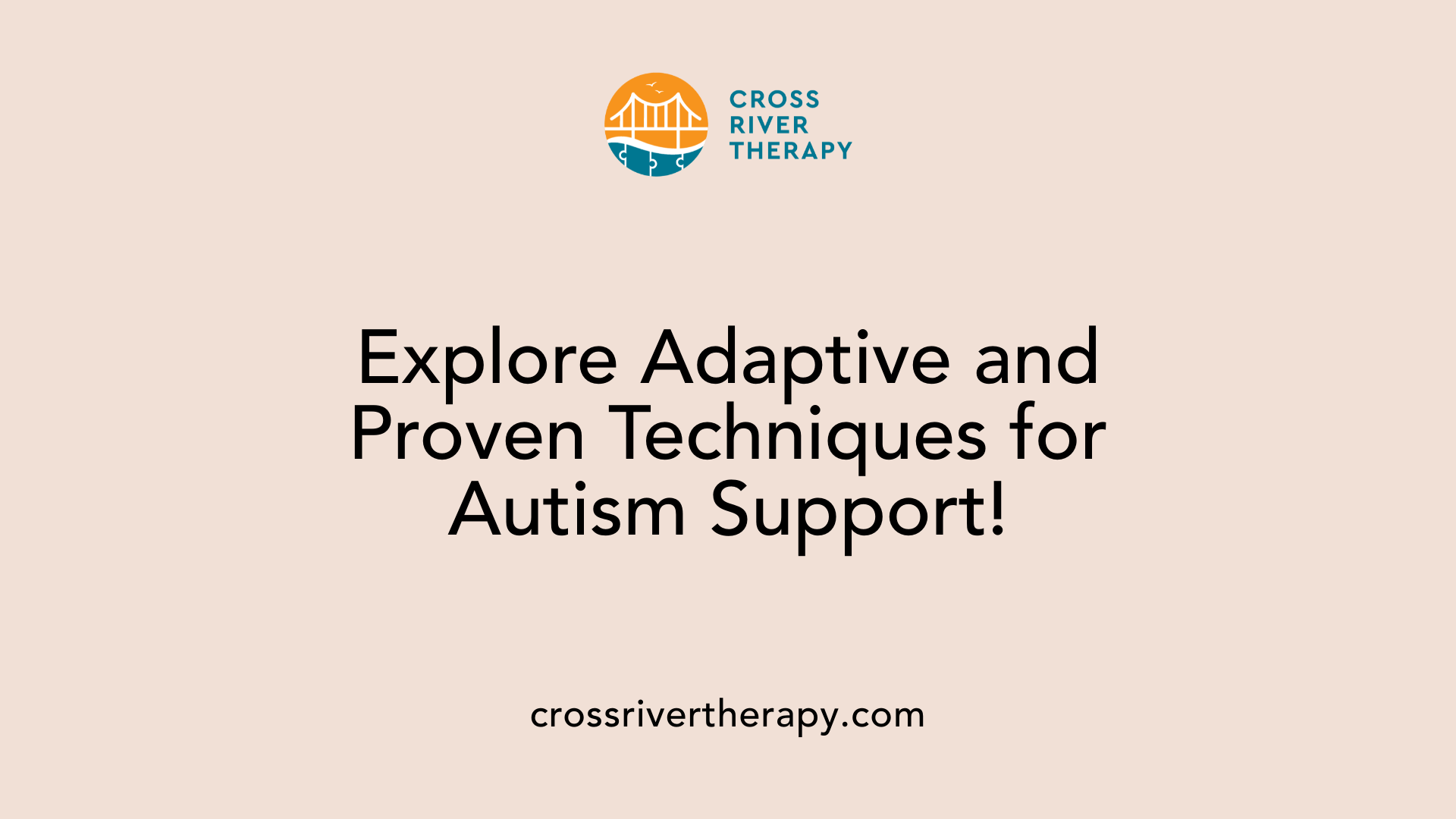ABA Therapy for Autism Therapy Support Centers
Exploring ABA Therapy Services for Autism Support
Understanding ABA Therapy
Applied Behavior Analysis, commonly known as ABA therapy, is acknowledged as one of the most effective interventions for Autism Spectrum Disorder (ASD). Rooted in the science of learning and behavior, ABA therapy enhances helpful behaviors while minimizing those that are harmful or maladaptive. For families exploring autism therapy support centers, understanding the scope and efficacy of ABA is essential. As a versatile and customizable therapy, ABA can support children with autism in various settings, tailoring the approach to meet each child's unique needs effectively. In this article, we delve into the core aspects of ABA therapy and explore how autism therapy support centers implement this evidence-based practice to improve children's lives.
The Core Components of ABA Therapy

Understanding the fundamental principles of ABA therapy
Applied Behavior Analysis (ABA) is grounded in the science of learning and behavior. It is designed to enhance positive behaviors while minimizing harmful ones. Through structured interventions, ABA helps individuals develop essential life skills by breaking down complex tasks into manageable steps. This systematic approach facilitates consistent progress tracking and measurement, allowing therapists to adjust strategies as needed.
Central to ABA therapy is positive reinforcement, where individuals are rewarded for exhibiting desired behaviors. This reward system not only motivates but also encourages the ongoing practice of these behaviors in various settings, contributing to successful outcomes.
How ABA therapy benefits children with autism
ABA therapy is particularly beneficial for children with autism spectrum disorder (ASD). Its methods have been employed since the 1960s and are recognized as effective interventions. Research shows that ABA can significantly improve critical skills, such as:
- Language and Communication: Enhances the ability to express needs and collaborate with others.
- Social Skills: Facilitates interaction and helps children engage with peers effectively.
- Academic Performance: Supports learning processes that integrate various subjects.
In current ASD treatments, behavioral approaches like ABA stand out due to their evidence-backed effectiveness. The therapy can be personalized to fit the unique needs of each child, making it versatile for implementation in homes, schools, or community settings.
This individualized attention ensures that the specific challenges faced by a child with autism are addressed thoroughly, significantly improving their daily functioning and quality of life.
Concise Overview of Key ABA Aspects
| Component | Description | Importance |
|---|---|---|
| Positive Reinforcement | Encouragement through valued rewards | Motivates desired behavior |
| Customizable Interventions | Strategies adapted to each individual | Allows tailored support |
| Skill Development | Focus on communication, social skills, self-care | Essential for life quality |
| Evidence-Based | Supported by scientific research | Proven effectiveness in outcomes |
By acknowledging the positive impact of ABA, families and practitioners can work together towards achieving significant improvements in the lives of children with autism.
Customizable and Evidence-Based Approaches

Adaptability and Evidence Base of ABA Therapy
Applied Behavior Analysis (ABA) is renowned for its flexibility in approach, making it suitable for a diverse range of individuals with varying needs. This adaptability extends across a spectrum of environments, allowing therapists to tailor methods to each participant's unique circumstances.
Since its inception in the 1960s for children with autism, ABA has consistently proven to be a reliable, evidence-based practice. It provides scientifically proven strategies that not only help mitigate harmful behaviors but also enhance beneficial ones. Institutions like the US Surgeon General and the American Psychological Association endorse ABA, underlining its validated effectiveness.
Applications Across Various Environments
ABA therapy can be implemented in multiple settings including:
- Homes – Providing one-on-one learning in a familiar space.
- Schools – Integrating educational support within the classroom to enhance academic skills.
- Community Settings – Experiencing and practicing social skills in real-world environments.
This versatility ensures that skills learned through ABA therapy can be generalized to various aspects of daily life. The ability to track and measure progress further enhances its effectiveness, allowing for ongoing adjustments that cater to each individual’s growth and development needs.
In conclusion, the adaptability and solid evidence backing ABA therapy make it a widely respected choice for supporting individuals with Autism Spectrum Disorder and related developmental challenges.
Skill Development Through Positive Reinforcement

Skill areas targeted by ABA therapy
ABA therapy is structured to enhance a variety of essential skills that can significantly improve the quality of life for individuals with Autism Spectrum Disorder (ASD). Some of the crucial areas targeted include:
- Language and Communication: Strategies are employed to boost verbal and non-verbal communication abilities, making exchanges more effective.
- Social Skills: Training focuses on enhancing interaction with peers and adults, promoting friendship and relationship-building.
- Attention and Memory: Techniques in ABA help children improve focus and retention of information, aiding in academic success.
- Self-Care: Instruction in daily living skills, such as dressing and hygiene, fosters independence.
Importance of positive reinforcement
A core element of ABA is positive reinforcement, which plays a vital role in cultivating desired behaviors. By rewarding individuals for exhibiting positive actions, such as appropriate communication or social engagement, clinicians can effectively promote these behaviors.
This reinforcement strategy involves:
- Valued Rewards: Each individual is motivated by different incentives, ranging from verbal praise to tangible rewards.
- Tracking Progress: ABA therapists monitor advancements, ensuring that reinforcement is timely and consistent.
The tailored approach of ABA therapy, combined with positive reinforcement, enables comprehensive skill development in a way that resonates with each individual's interests and needs, proving its effectiveness across various environments.
Comprehensive Autism Support Solutions
Range of therapies in autism support centers
Autism support centers offer a diverse array of therapeutic options tailored to meet individual needs. These include:
- Applied Behavior Analysis (ABA): This evidence-based therapy utilizes techniques focusing on reinforcing positive behaviors and reducing negative behaviors. It’s particularly effective in enhancing language and communication skills.
- Occupational Therapy: Aims to improve daily living skills by promoting independence in tasks, integrating sensory strategies, and physical therapy.
- Speech and Language Therapy: Focuses on improving verbal and non-verbal communication abilities. This is essential for children who struggle with expressive and receptive language skills.
- Developmental Approaches: These interventions enhance critical skills through play and social interaction, accommodating developmental needs alongside behavioral strategies.
- Educational Models: Methods like TEACCH provide structured learning environments which cater to the unique learning styles of individuals with autism.
Integration of developmental and behavioral approaches
Combining developmental and behavioral strategies allows for a holistic approach to treatment, particularly beneficial for individuals with high-functioning autism (ASD Level 1). This dual approach addresses both the learning and behavioral aspects of autism.
- Therapy Customization: By integrating various therapies such as ABA with developmental models, practitioners can customize support to tackle specific challenges like sensory sensitivities and social skills deficits.
- Skill Development: Using methods like the Early Start Denver Model (ESDM), focus is placed on natural interactions to promote social skills and essential life skills through play.
In conclusion, a multifaceted strategy that incorporates both developmental and behavioral techniques ensures comprehensive support, paving the way for individuals with autism to thrive in their everyday lives.
Evaluating Therapy Centers: What to Look For
Key criteria for choosing an autism therapy center
When selecting an autism therapy center, it’s essential to consider several factors to ensure the best possible environment for your child. Look for centers that:
- Provide Evidence-Based Practices: Ensure they utilize approaches like Applied Behavior Analysis (ABA), which is widely recognized for its effectiveness.
- Customization of Therapy: The center should adapt methodologies to individual needs and preferences, emphasizing personalization in treatment.
- Qualified Staff: Verify that therapists are certified and have experience in handling autism-related developmental disorders.
- Positive Environment: The physical and emotional atmosphere should feel welcoming, as a supportive environment enhances learning.
Understanding therapist qualifications and experience
Therapists should possess relevant qualifications, such as a board certification in behavior analysis (BCBA) or experience in therapies like the Early Start Denver Model (ESDM) for younger children. Their background should involve:
- Practical Experience: Look for therapists with hands-on experience in various therapy settings, including educational and home environments.
- Continuous Training: Therapists should engage in ongoing professional development related to the latest approaches in autism therapies, ensuring up-to-date methods are used.
- Clear Communication Skills: Effective communication is crucial, not only for working with children but also for involving families in the therapeutic process.
Insurance and Financial Planning for Autism Services

Navigating insurance coverage for ABA therapy
When it comes to Autism Spectrum Disorder (ASD) treatment, understanding insurance coverage for Applied Behavior Analysis (ABA) is crucial for families. Not all insurance plans are the same, and coverage varies significantly from one plan to another. Many states require insurance providers to cover ABA therapy, recognizing it as an evidence-based treatment endorsed by the US Surgeon General and the American Psychological Association.
Families should inquire about specific benefits related to ABA therapy and whether there are limits on the number of sessions or annual coverage caps. Understanding the required documentation and processes for authorization from providers can also be beneficial. Consulting with a knowledgeable insurance agent or a specialist in autism services can help clarify what is available under a specific plan.
Financial considerations for families
Planning for the financial aspects of autism services can be challenging but necessary. ABA therapy can be expensive, with costs varying based on treatment frequency, the therapist's expertise, and location. Families need to consider out-of-pocket expenses, including copays and deductibles, which may strain their budgeting.
Additionally, considering alternative funding sources such as state funding programs, grants, and community resources can alleviate some financial burdens. Some families may also explore tax deductions for medical expenses related to autism treatment.
By reviewing all options and creating a well-thought-out financial plan, families can better navigate the expenses associated with autism services and ensure their loved ones receive the support they need.
Supportive Networks and Resources for Families

Importance of family and community support
Family and community support play an essential role in the lives of individuals with autism and their caregivers. Navigating the complexities of autism can be overwhelming, hence the need for a supportive network. Families benefit from shared experiences, emotional support, and practical advice that can enhance their understanding of Managing Autism Spectrum Disorder (ASD).
Community resources also offer opportunities for social interaction and skill development. By connecting with other families, individuals with autism can gain social skills and feel included, helping to bolster their confidence and foster friendships.
Accessing additional resources and organizations
Various reputable organizations provide tailored resources and support for families affected by autism. Here are some prominent examples:
| Organization Name | Focus Area | Services Offered |
|---|---|---|
| Asperger/Autism Network (AANE) | Advocacy and Education | Information, education, and advocacy for families |
| Autism Highway | Resource Development | Events and tailored resources for autism |
| Autism Navigator | Research Integration | Evidence-based tools connecting research with practices |
| Autism Research Institute | Treatment Research | Development of effective treatment methods |
| Autism Society | Awareness and Services | Advocacy for services and support for the autism community |
| Autism Speaks | Awareness and Funding | Fundraising for research and awareness |
| MyAutismTeam | Social Networking | Online support and resource sharing for families |
| Organization for Autism Research | Research and Advocacy | Research publications and advocacy initiatives |
These organizations facilitate connections, provide resources, and advocate for the needs of individuals with autism. Engaging with such networks can significantly enhance families' understanding and navigability of autism support systems.
Addressing Challenges in Daily Life for Autistic Children
Understanding and addressing daily challenges for children with autism
Children with autism often encounter significant challenges in daily life, particularly in social settings and when adapting to changes. Social skills can present a barrier, as engaging with peers or adults may be difficult. This is often compounded by the need for predictability, as children with autism typically thrive on established routines.
Unexpected changes, even minor ones, can provoke anxiety and distress. Their unique sensory processing issues can intensify this reaction, leading to overwhelming feelings in unexpected or noisy environments. Executive functioning deficits further contribute to difficulties in navigating daily tasks and new situations.
Strategies for managing specific difficulties
To support children with autism, caregivers can implement various strategies:
- Visual Schedules: Use visual aids to create a clear and predictable routine. This helps children know what to expect, reducing anxiety about upcoming events.
- Practice Transitions: Gradual exposure to change can be beneficial. Introducing small adjustments in a controlled manner familiarizes the child with the concept of change, making it less intimidating.
- Encourage Social Interactions: Structured play and social skills training, utilizing methodologies from Applied Behavior Analysis, can enhance communication abilities and peer interactions.
- Provide Consistent Environment: Maintaining a stable atmosphere, whether at home or in school, aids children in feeling secure.
Implementing these supports creates a more comfortable and manageable daily experience for children with autism, fostering their ability to thrive.
Taking the Next Steps in Autism Care
Choosing the right therapy path for a child with autism is a pivotal decision for families, underscoring the importance of thorough research and consideration. ABA therapy stands out as a cornerstone of autism treatment due to its adaptability and evidence-backed effectiveness. As families evaluate potential therapy centers, understanding the roles of different therapies and support networks enhances informed decision-making. With comprehensive support systems, including reputable organizations and personalized approaches, families can empower their children to navigate life with greater confidence and independence. The journey towards accessing the right interventions involves collaboration with professionals, but more importantly, it’s about building a support system that optimally caters to each unique child’s needs and potential.
References
- Applied Behavior Analysis (ABA) | Autism Speaks
- Treatment and Intervention for Autism Spectrum Disorder - CDC
- Treatment and Intervention for Autism Spectrum Disorder - CDC
- Autism Spectrum Disorder (ASD) - CDC
- Accessing Services for Autism Spectrum Disorder - CDC
- About Autism Spectrum Disorder - CDC
- Treatment Options - Autism Science Foundation



